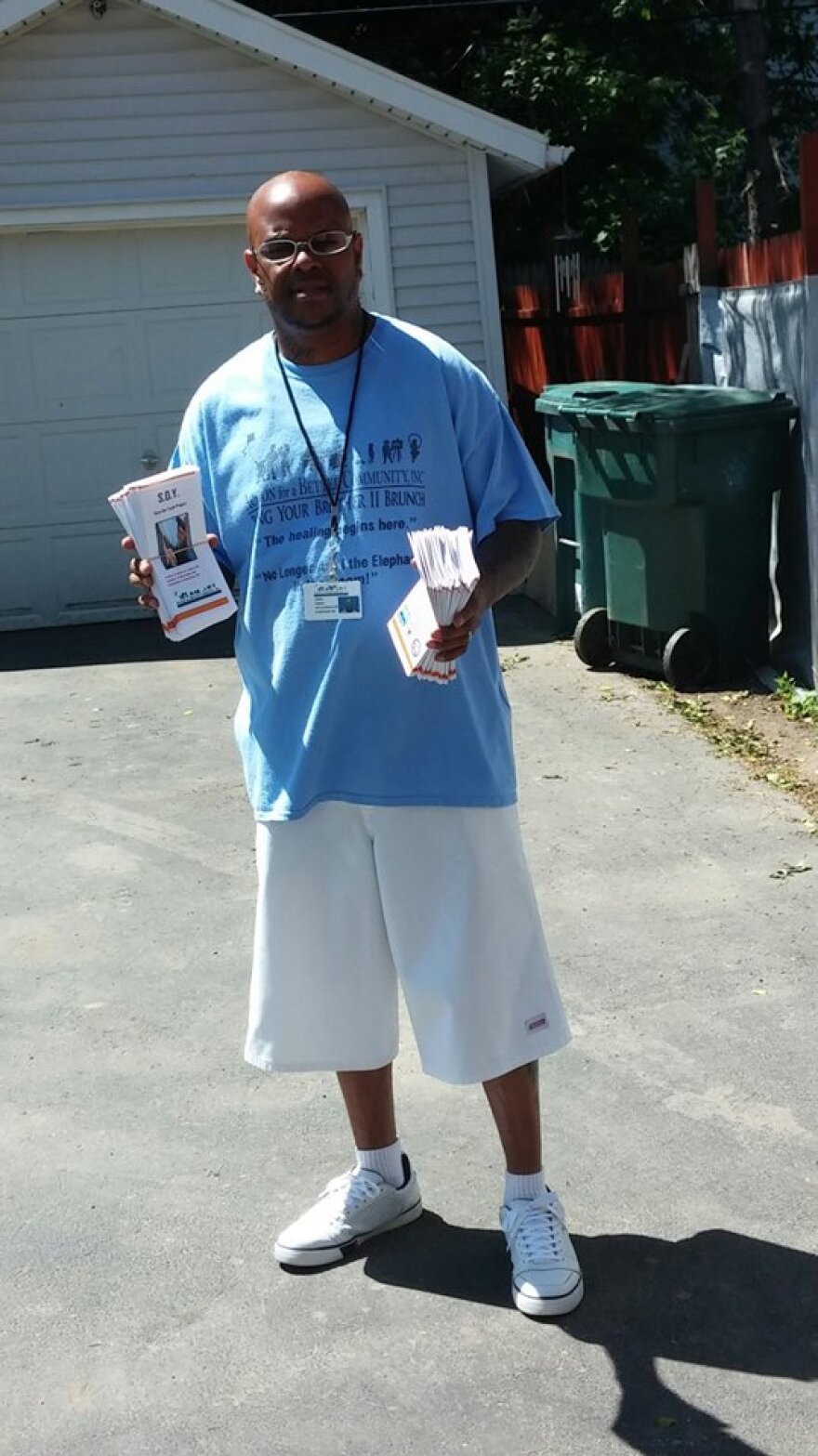Rochester New York's Northeast side has the image of being one of the most dangerous neighborhoods in the city, exacerbated by low incomes. It's also home to families, local businesses, and a rich history, and often the recipient of community outreach services and anti-violence initiatives.
Save Our Youth is one of the most recent initiatives. The idea is to employ individuals who have come out the other side of the criminal justice system with the motivation to positively impact the community. Their history enables them to help detect and interrupt acts of violence before they happen. The method is based on the Cure Violence Model out of Chicago, Illinois, which treats violence as a disease or public health issue. But it's one of a raft of programs and was only funded for one year.
(Video after the jump)
Pedro Franco is the program's supervisor.
"This is not an easy thing to do. I work 24 hours. I could be at home, and if one of these guys are there, because sometimes they work until 2:00 in the morning, and if there is a shooting, I have to get up. I have to go support my team."
Save Our Youth, or SOY, hires what they call "credible messengers," like Franco. Franco has spent 14 years in and out of the criminal justice system.
The program's violence intervention can happen in a number of ways. SOY workers on the street seek to deescalate potentially dangerous situations. They also respond to shootings to dissuade retaliation. The program also has long-term goals, and seeks to prevent violence by affecting the lives of those who may become involved in the future before it's too late.
Changing behaviors
Ashley Davis is a client of SOY. They call her a participant.
"If it wasn't for them I'd probably be stuck in the same situation doing the same things that I was doing previously. They just showed me a positive road. They showed me you ain't always gotta stay stuck in your situation and they helped me out a lot."
In the days before SOY, Davis says she was associating with the wrong people. Now, she's back in school and holding down a job. Davis participates in SOY voluntarily. Like other participants, she was recommended to the program through the court system or by word of mouth. Participants are then connected with an outreach worker, who supports them by making sure they get to school, or probation, or helping them navigate social services.

Waymon Daniels is Davis' outreach worker.
"I always had a love for people and when I went to prison I became a motivational speaker and a youth advocate, so when I came out I just said you know what, why not continue?"
Daniels says it's his sense of humor that usually gives him credibility with the participants, who are typically between 13 and 22 years old.
"I love kids and kids seem to gravitate to me. And that's a gift. I think it's my energy."
Outreach workers and program participants also hold peace rallies throughout the city, memorializing young people who have died and urging the community to make changes. They hold signs, start chants, and hand out fliers.
The money's running out
SOY is funded through a $3 million state grant, $160,000 of which is specifically for the City of Rochester. The program is overseen by Action for a Better Community, who reports to the New York State Division of Criminal Justice Services.
"I wouldn't want people to hold their breath saying there'll be more funding next year or the year after."
Mike Green is the Executive Deputy Commissioner of the DCJS. He says zero tolerance law enforcement efforts in Rochester, though well intentioned, are not deemed by the community as particularly impactful. As a former prosecutor, Green says he was not completely sure the criminal justice system was going far enough.
"I felt justice was done and I felt the right result, but someone's still dead and someone's going to prison for the rest of their life and it didn't seem like cause to be happy."
Local law enforcement has their own initiatives in place to reduce violence, like the Gun Involved Violence Elimination or GIVE program. Organizations like Action for a Better Community oversee multiple programs that all aim to reduce violence. SOY is another one of them.
Save Our Youth has also seen its share of management issues. Since it began last summer, the program has seen a complete overhaul of its administration. Pedro Franco says he's only been in charge since October, and says they have not had enough time to make any long-term changes.
Green seems cautious about the longevity of the program. He says if local law enforcement and the community see value in it, they should look for investments from private entities.
"I wouldn't want people to hold their breath saying there'll be more funding next year or the year after."
Franco has been lobbying in Albany to keep money flowing to SOY. He says if the program does get refunded, he will make sure all of his participants are taken care of. He says he and his outreach workers will also probably be able to find employment in other community organizations. But Franco says, if a program given less than a year to operate has the rug pulled out from under it, he worries about the effect on the community.
"Because it's just another pop-up program that came through the North East and left us."
Watch Sasha-Ann Simons' report as aired on WXXI-TV's Need To Know.
https://www.youtube.com/watch?v=nChJPok28-o




